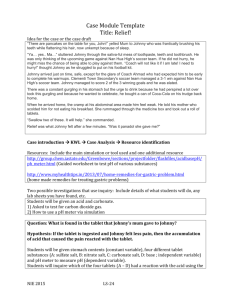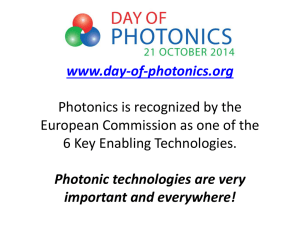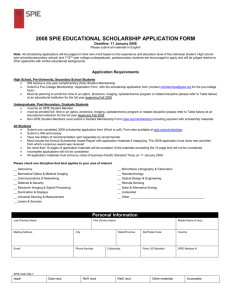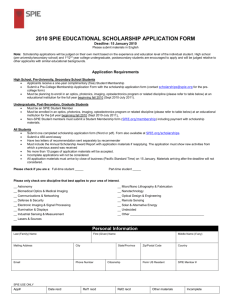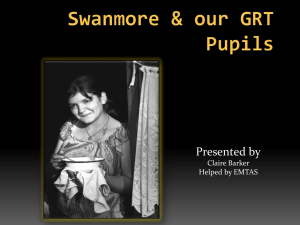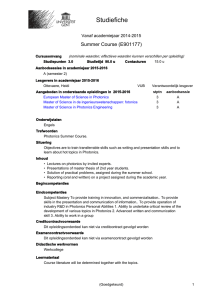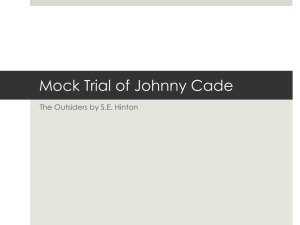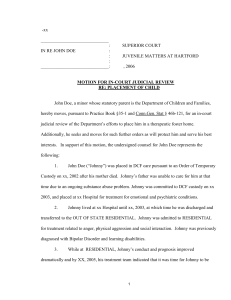Challenges for Photonics
advertisement
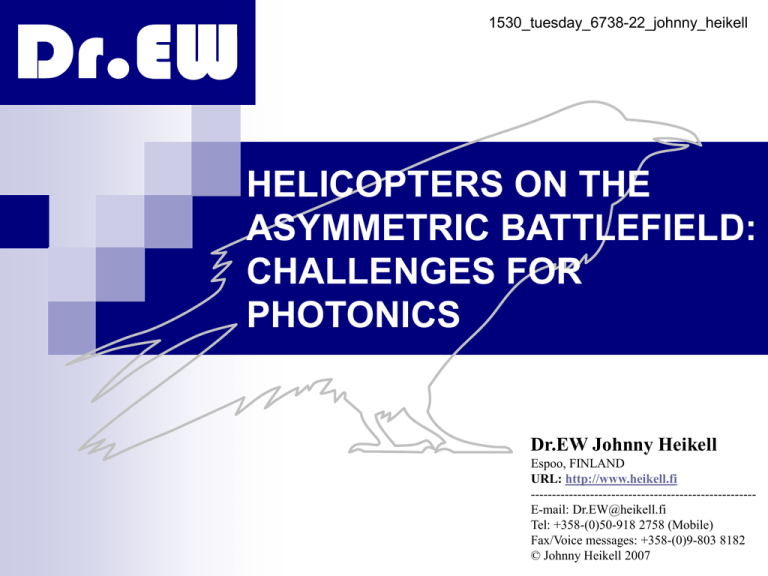
1530_tuesday_6738-22_johnny_heikell HELICOPTERS ON THE ASYMMETRIC BATTLEFIELD: CHALLENGES FOR PHOTONICS Dr.EW Johnny Heikell Espoo, FINLAND URL: http://www.heikell.fi ----------------------------------------------------E-mail: Dr.EW@heikell.fi Tel: +358-(0)50-918 2758 (Mobile) Fax/Voice messages: +358-(0)9-803 8182 © Johnny Heikell 2007 © Johnny Heikell 2007 Asymmetric conflicts Conducted increasingly in urban environments Littoral operations becoming more common Entire operational area is a combat zone Insurgents disguised as civilians Insurgents armed mainly with ad hoc and portable weapons Insurgents mainly do not use aircraft Assassinations conducted by all parties Popular support critical to all parties Europe A.D. 1848 SPIE 6738-22 © Johnny Heikell 2007 Battlefield helicopters Inherently unstable and difficult to fly Low flight height, day and night Low flight speed, zero at hovering Weight constrained Real estate constrained Vibration and fuselage flexure High noise level Vulnerable rotors, risk of rotorinduced signal modulation Strong IR signature Visual signatures SPIE 6738-22 © Johnny Heikell 2007 Photonics: Requirements & challenges Must understand the operational environment Enemy & population, culture, “hearts and minds” Climate, topography, atmospheric conditions Friend-foe-neutral signatures, including IR/UV background Must adhere to strict ROEs Ejection of MVT flares, need for low-hazard flares Laser safety, UN Protocol on Blinding Laser Weapons Need for NLW laser Need uniform horizontal capability Enemy detection, identification location, and suppressive fire Threat detection, identification, location, and CM execution Must minimize obscured sectors SPIE 6738-22 © Johnny Heikell 2007 Photonics: Requirements & challenges Short engagement ranges and timelines Threat declaration Detection warning CM onset SPEED 600 1.0 0.8 Boost Ejection Sustain 500 400 0.6 0.4 300 Ejection spike 200 0.2 100 0 1 Motor ignition 2 3 Boost to sustain transition SPIE 6738-22 4 5 TIME ELAPSED (seconds) (m/s) MISSILE SPEED Short (2-4 s): IR MANPADS, LBR antitank missiles Very short (<1 s): Ballistic weapons, STARSTREAK Super short (milliseconds): IEDs, anti-helicopter mines (arbitrary units) MISSILE IRRADIANCE AT TARGET © Johnny Heikell 2007 Photonics: Requirements & challenges Standoff detection of CBRE threats Chemical: Some existing solutions (e.g. FTIR, which is sensitive to IR background clutter), differential LIDAR promising Biological: Very difficult (fungi spores, pollen, common bacteria) Radiological (and Nuclear): More or less same as C Explosives: Intensive research but so far no solution that reaches 100 m standoff range (present hopes on RPAS and NLWM) Summary: A long way to go before we have a complete solution that can be put on helicopters SPIE 6738-22 © Johnny Heikell 2007 Photonics: Requirements & challenges High spatial resolution, ISR compatibility Accurate and positive identification and target elimination (assassination) Need for high spatial resolution Cueing by other ISR assets Compatibility & data fusion Inaccuracy: The attempt to assassinate Somali clan leader Aidid in A.D. 1993 Pinpoint accuracy: The assassination of Caesar in 44 B.C. SPIE 6738-22 © Johnny Heikell 2007 Photonics: Requirements & challenges Priorities for shared resources Which pop-up frames on MFD? Who gets access to multiplex buses? Priorities must be determined in advance Do not overload the pilot, he is a busy working! Alternatives to on-board acoustic sensors Helicopter too noisy for acoustic sensors, EO alternatives are needed An integrated photonics architecture? DIRCM: Not in use 99.9999% of combat flight time! Multipurpose laser: DIRCM—obstacle warning—LRF—etc.? Common apertures & receivers: IRST—MLD—LWR—etc.? Practical limitations: No combined MLD—LWR; no combined damaging—jamming DIRCM laser The issue is mainly a mental exertion, though the idea of improved integration is worth keeping in mind SPIE 6738-22 © Johnny Heikell 2007 Conclusions Rather evolutionary than revolutionary challenges Broader set of environmental requirements, from threats and atmosphere to socio-cultural challenges Decreasing engagement timelines, preemptive countermeasures are the only feasible solution in extreme cases Heaviest challenge for the laser community, the laser is “a deficient solution to demanding needs” Sensors: High sensitivity/long ranges high spatial resolution/wide IFOV Need cooperation between the scientific-technical and operational communities SPIE 6738-22 © Johnny Heikell 2007 SPIE 6738-22

